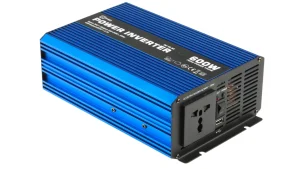Grid-tied systems, which connect directly to the local utility grid, offer numerous benefits for homeowners and businesses alike. These systems allow for the use of renewable energy sources, such as solar panels, to not only power your home but also to contribute excess energy back to the grid. Below, we dive into the specifics of why grid-tied systems are an increasingly popular choice.
Cost Savings
Reduced Electricity Bills
Grid-tied systems significantly lower electricity bills since they rely on solar power—a free energy source—during the day. For an average home installing a 5 kW solar panel system, monthly savings can range from $100 to $200, depending on local electricity rates and solar irradiance levels.
Net Metering Benefits
Many utilities offer net metering, which credits you for the excess electricity your system generates and feeds back into the grid. This can lead to further reductions in your electricity costs, especially in sunny months when solar production exceeds consumption.
Environmental Impact
Reduction in Carbon Footprint
By using renewable energy, grid-tied systems decrease the reliance on fossil fuels, thus reducing greenhouse gas emissions. A typical residential solar panel system can eliminate three to four tons of carbon emissions each year—equivalent to planting over 100 trees annually.
Energy Independence
Reduced Dependency on the Grid
With a grid-tied system, while you remain connected to the utility grid, your dependency on it diminishes as you generate most of your electricity. This contributes to a more sustainable and self-sufficient household or business.
Reliability and Efficiency
High System Efficiency
Grid-tied systems are highly efficient, as they convert solar energy directly into electricity without the need for batteries. The efficiency of solar panels typically ranges from 15% to 20%, and when paired with a grid tie inverter, the overall system efficiency can increase, ensuring more electricity is available for use or export.
Low Maintenance Costs
These systems require minimal maintenance compared to off-grid systems, primarily because they have fewer components and do not include batteries, which need regular replacement and maintenance. The average maintenance cost for a grid-tied solar system is around $150 to $300 per year, significantly lower than the costs associated with off-grid systems.

Scalability
Easy to Expand
Grid-tied systems offer the flexibility to expand as your energy needs grow. Adding more solar panels or inverters to your existing setup is straightforward, allowing you to increase your renewable energy production without a complete system overhaul.
Technological Advancements
Integration with Smart Technology
Modern grid-tied systems can integrate with smart home technologies, allowing for real-time monitoring and management of energy production and consumption. This smart connectivity enhances the user experience by providing detailed insights into system performance and energy savings.
In conclusion, grid-tied systems present a compelling option for those looking to reduce electricity bills, minimize environmental impact, and achieve energy independence. With the added advantages of reliability, scalability, and technological integration, these systems offer a sustainable and efficient solution for powering homes and businesses.
